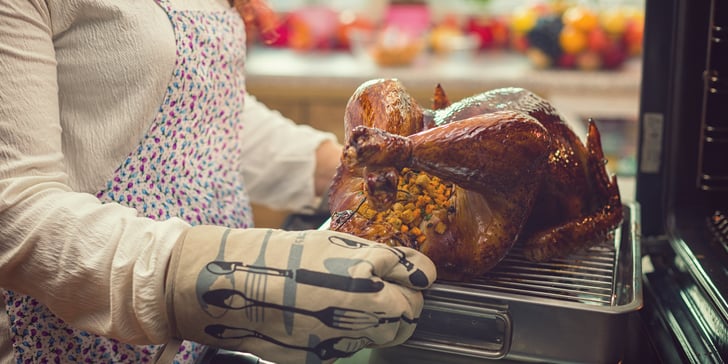
/Bakedturkeythermometer-GettyImages-155280203-591f2e615f9b58f4c02398bf.jpg)
The easiest way to ensure your turkey is done properly each and every time is to invest in a WIFI meat smoking probe. But you also don’t want to cook the turkey much past this, as this is when the breast meat will start to dry out. Turkey meat must reach an internal temperature of 165☏ in order to be safe to eat. The best way to know when a smoked turkey is done is via a temperature probe. This means for a 10lb turkey, you should plan at least 4 hours for cooking.Īlways estimate high to be on the safe side, as well as to allow turkey time to rest before you serve it. When you choose to smoke your turkey at 275☏, you should plan for 20 min per pound of meat. How Do You Know When a Smoked Turkey is Done? You never know when you may find the perfect temperature for you! So don’t be afraid to try smoking a turkey at slightly different temperatures each time you try. For this reason, we suggest beginners always use 275☏ for their smoking temp. After 275☏, this temperature is our second favorite as it is still slow enough to seal in the juices but can help you trim a little time off of smoking your meat as it only takes about 15 minutes per pound.īe very careful, though, because it is very easy to overcook your turkey when the smoker is set to 325°, especially if your smoker runs a bit hot.

On the high end, some people choose to smoke their turkey at 325☏. Meaning a 15lb bird cooked at 250☏ will take almost 8 hours to cook. And even though you can smoke foods at lower temps than that (most notably pork butt, which some people smoke at 160☏), we don’t recommend cooking a turkey at less than 250☏.Įspecially because at this temperature, it takes 30 minutes per pound for the bird to cook fully. The only downside to roasting a turkey in pieces is that you’ll lose some of the drama that comes with ushering a whole-roasted bird to the table-but your guests are sure to get over that as soon as they take their first bite.What Temperatures Can You Smoke a Turkey at?Īlthough we believe that 275☏ will yield the best results, there are other temperatures you can smoke a turkey at. By cooking the bird in parts, you can pull out the breast when it’s perfectly cooked (at 150°) and let the legs continue to roast until the thickest part of the thigh and drumsticks register about 170°, then let carryover cooking take each piece to optimal doneness. In one of our favorite Thanksgiving turkey recipes, the post-brine pieces sit at room temperature for 2 hours before roasting at 425° for 20–25 minutes, then 300° for 50–70 minutes longer. This allows you to catch all those umami-packed drippings in the pan while giving the turkey parts the best chance at crisping and reaching that gorgeous golden hue. We suggest placing the pieces on a wire or roasting rack set inside a rimmed baking sheet instead of the typical roasting pan. Ask for the bird to be cut into five pieces: the legs, wings, and whole turkey breasts with the backbone removed.
#Turkey done temp free#
You can break down the raw turkey yourself if you feel confident (and have a sharp enough knife), but feel free to ask your butcher to handle it. Keep in mind, even turkey pieces should be dry-brined and sit in the fridge ideally for a few days, so the tips above still apply. By roasting the pieces on their own, each one has optimal exposure to the oven heat, leading to more consistent cooking. Roasting a turkey in parts is another approach that addresses the issue of potentially uneven cooking head-on. Then, reduce the heat to 300°–350° and finish roasting for 65–85 minutes more, until a meat thermometer registers your desired temperature. This step should take place in the 425°–450° range with a time of 30–45 minutes, depending on how high you go.
#Turkey done temp skin#
For a surefire way to ace both, start roasting at a higher oven temperature to jump-start the fat-rendering of the skin and give it some color. The former is achieved through high heat, while the latter is achieved through a gentler, lower heat. There are two main goals when roasting a perfect turkey: browning the skin so it’s crackly and delicious and roasting the interior meat so it’s tender and moist. Below is a more strategic alternative for anyone looking for a slightly more advanced preparation. This is the most straightforward approach for those in charge of turkey for the first time and will result in an excellent bird. These calculations are an overall guideline: Keep an eye on the doneness of your turkey by checking its internal temperature about three quarters of the way through the cook time, then every 10 minutes or so after that. Use the table below to calculate the right combination for your particular bird.


 0 kommentar(er)
0 kommentar(er)
